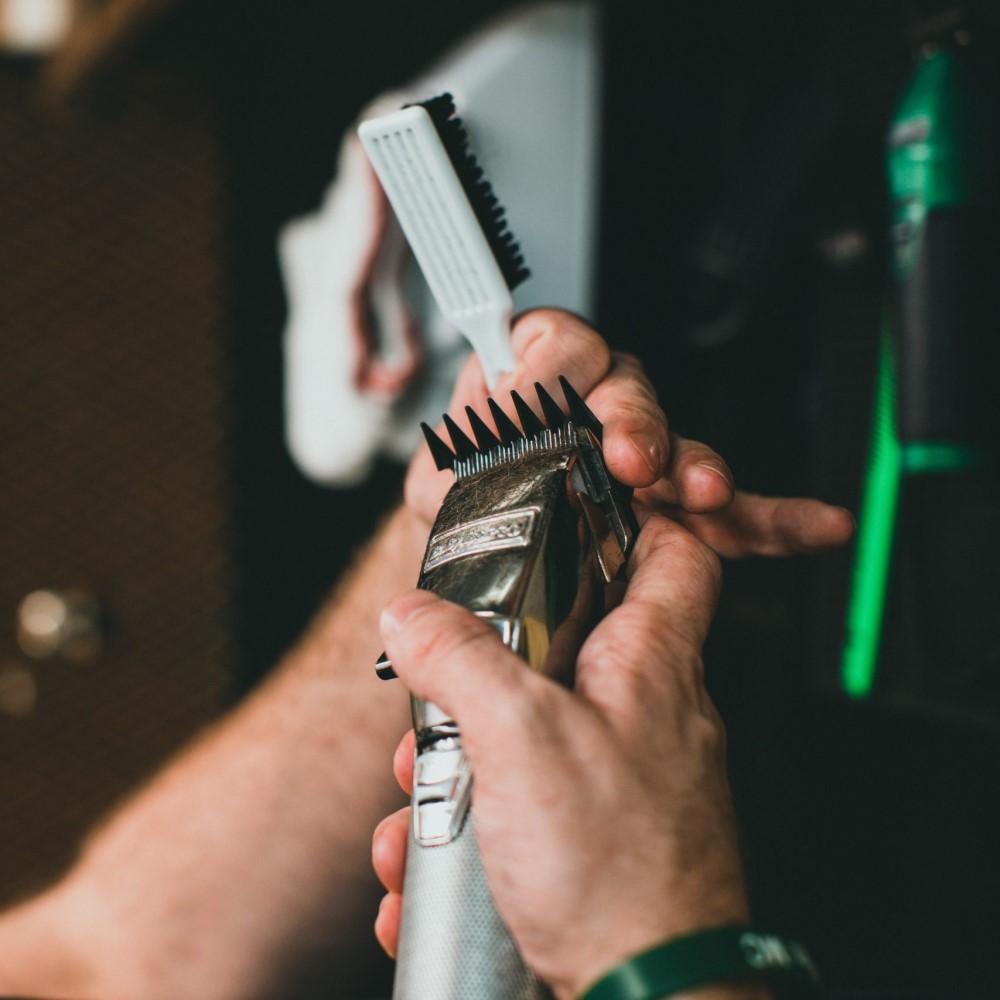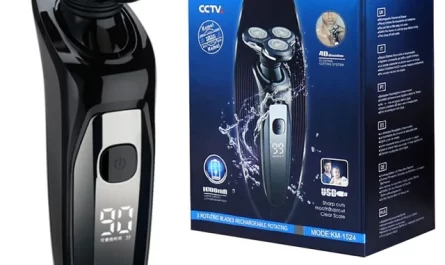Is Sharpening Necessary?
Determining if your hair clippers require sharpening is vital before proceeding.

When To Consider Sharpening Your Clippers
You might think about sharpening when clippers pull hair or don’t cut cleanly. Dull blades often lead to uneven haircuts, so sharpening can improve performance.
Common Signs That Your Clippers Need Sharpening
Signs include snagging hair, louder noises during use, and clippers getting hot quickly. If you notice these issues, it might be time to sharpen the blades.
Cleaning vs. Sharpening: Identifying the Real Issue
Sometimes, clippers just need a good clean, not sharpening. Built-up hair and debris can cause poor performance. Always try cleaning first to see if it solves the problem.
Cleaning Clippers Before Sharpening
Before you proceed with sharpening your hair clippers, it’s imperative to clean them.
The Importance of Cleaning and Maintenance
Routine cleaning ensures your clippers perform well and last longer. Dirt and hair residue can mimic dullness, affecting cutting efficiency.
Simple Steps for Cleaning Hair Clippers
- Unplug and Disassemble: First, ensure your clippers are off and unplugged. Carefully take apart your clippers by removing the blades.
- Brush Out Hair: Use a small brush to remove loose hair from the blades and clipper.
- Soak and Scrub: Soak the blades in soapy water. Use a soft-bristled brush to scrub away stubborn grime.
- Rinse Thoroughly: After scrubbing, rinse the blades under running water to remove any soap residue.
- Dry Completely: Pat the blades dry with a clean cloth. Allow them to air dry fully before reassembling.
- Apply Clippers Oil: Before reassembling your clipper, apply a few drops of clippers oil to the blades.
By following these steps, you’re setting the stage for a successful sharpening process, ensuring that your hair clippers will be revived and ready for use.
Preparing Clippers for Sharpening
Proper preparation is key to successfully sharpen your hair clippers.
Detaching and Inspecting Blades
Start by disconnecting the blades from your clippers. Use a screwdriver to carefully remove the screws. Take out the blades and examine their condition. Look for signs of dullness or damage. This step is crucial to determine if sharpening or replacement is needed.
Essentials Tools for Sharpening Clippers
You will need the right tools for effective sharpening. Select a set of fine and extra-fine grit diamond stones, they offer precision for sharpening hair clippers. No diamond stones? Fine grit emery cloth or high-quality sandpaper can also work. Remember, always keep your tools clean for optimal results.
Sharpening Clippers with Diamond Stones
Sharpening hair clippers with diamond stones can revitalize your tools. These stones provide precision and longevity. Here’s how to do it.
Selecting the Right Grit for Your Blades
Choose fine and extra-fine grit diamond stones for the best results. Avoid coarse grits—they remove too much steel. Fine grits sharpen without excessive wear on the blades.
Step-by-Step Process for Sharpening with Stones
- Detach Blades: Unscrew and remove the blades from the clipper.
- Clean Blades: Clean blades thoroughly to remove all debris.
- Inspect Blades: Look closely at blades. Check for dullness and damage.
- Position Blade: Set the blade flat against the diamond stone.
- Sharpen: Gently slide the blade forward and back over the stone. Use simple motions.
- Repeat: Do ten passes on the fine grit. Repeat on the extra-fine grit for a polish.
- Check Sharpness: Run your finger across the blade. It should be smooth and shiny.
- Test Run: Reassemble the clipper and test the sharpness.
- Lubricate: Finally, oil the blades and reassemble your clipper.
By following this process, your hair clippers should be sharp and efficient. Always remember to test and adjust after sharpening!
Alternative Sharpening Methods
Not everyone has access to specialized sharpening tools like diamond stones. Fortunately, there are other simpler methods that can be very effective for sharpening hair clippers. Two popular methods include using emery cloth or sandpaper.
Using Emery Cloth or Sandpaper for Sharpening
For those without traditional sharpening stones, emery cloth or sandpaper provide a feasible alternative. Here’s how to use these materials to sharpen your hair clippers:
- Choose the Right Grit: Start with a fine grit emery cloth or sandpaper. Avoid coarse grits which can remove too much metal.
- Secure the Sandpaper: Attach the sandpaper to a flat surface. This stability is crucial for even sharpening.
- Sharpening Motion: Slide the blade back and forth across the sandpaper. Do this ten times on fine grit and then switch to extra-fine grit for a smooth finish.
- Check Your Work: After sharpening, examine the blades for evenness and sharpness.
 Benefits and Limitations of Non-Traditional Sharpening Tools
Benefits and Limitations of Non-Traditional Sharpening Tools
Benefits:
- Accessibility: Emery cloth and sandpaper are readily available and inexpensive.
- Convenience: These materials can be used at home without needing to buy specialized tools.
Limitations:
- Less Precision: Might not provide the exact level of sharpness that specialized stones offer.
- More Effort Required: Manual effort is higher, and achieving an even sharpen needs more attention.
Using these alternative methods can be particularly useful for quick fixes or for those who prefer a more hands-on approach to maintenance. However, for the best results, especially on professional or frequently used clippers, traditional methods or professional services might be preferable.
Professional Sharpening Services
Not everyone feels comfortable sharpening hair clippers at home. That’s where professional services come in.
When to Choose Professional Sharpening Over DIY
You may choose professional sharpening if:
- You lack confidence in your DIY skills.
- You don’t have the correct tools.
- You’re dealing with high-end clippers.
- You want to ensure the highest precision.
Professionals have the experience and equipment to sharpen blades properly. They can handle complicated issues.
Finding a Trusted Sharpening Service Provider
Here’s how to find a good service:
- Ask for Referrals: Talk to local barbers or stylists. They know who sharpens their tools well.
- Check Reviews: Look online for customer feedback. Good reviews often point to reliable service.
- Confirm Expertise: Ensure they have experience with hair clippers specifically. General blade sharpening might not suit.
- Compare Prices: Don’t just go for the cheapest option. Balance cost with the quality of service provided.
Choosing professional sharpening means delegating the task to someone skilled. This can prolong the life of your clippers and ensure a quality job. Use the steps above to find a trustworthy provider.
Considering Blade Replacement
Not all issues with hair clippers can be fixed by sharpening alone.
When to Replace vs. When to Sharpen Blades
Decide to sharpen when clippers pull hair or cut unevenly. Replace when blades are damaged beyond repair, rusted extensively, or sharpening has no effect. Consider the blade’s age and usage frequency. Frequent users may need replacements sooner.
Tips for Choosing the Right Replacement Blades
Always choose blades made for your clipper model. Opt for manufacturer-made over generics for reliability. Check reviews and seek advice from professionals for the best choice. Investing in high-quality blades pays off in performance and durability.
 Maintaining Your Clippers Post-Sharpening
Maintaining Your Clippers Post-Sharpening
Proper maintenance extends the life of your hair clippers after sharpening.
Lubricating Blades for Optimal Performance
Lubrication is key to smooth operation. Use clipper oil to lubricate the blades after cleaning, sharpening, and before every use. This reduces friction, keeps the clippers cool, and ensures they cut hair evenly. Just apply a few drops and run the clipper to distribute the oil.
Testing and Adjusting Blades After Sharpening
After sharpening and reassembling, test your clippers on a small hair section. They should cut cleanly without pulling or snagging. If not, they may need more sharpening or adjusting. Sometimes, you need to align the blades. Make sure they are straight and parallel to one another. Adjust them with a screwdriver if necessary. Always check the tension and make fine adjustments for optimal performance. Sharpen hair clippers regularly for the best results.



